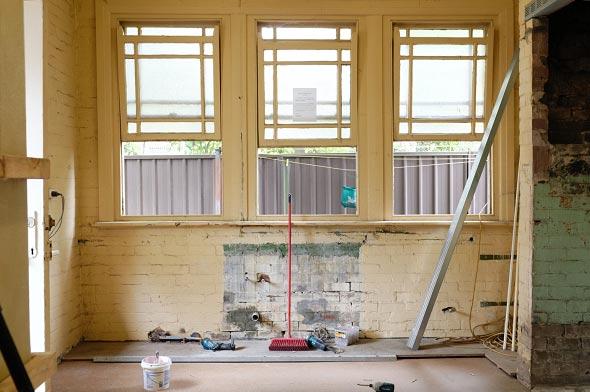They are making a few great points about Reducing Your Risk Of Water And Fire Damage At Home as a whole in this post below.

Water provides life, water invasion on parts where it's not supposed to be can result in damages. Residences with water damages smell mildewy as well as old.
Water can come from several resources such as tropical cyclones, floodings, ruptured pipes, leakages, as well as sewer concerns. In case you experience water damage, it would certainly be great to know some safety and security precautions. Below are a few standards on exactly how to manage water damage.
Do Prioritize House Insurance Protection
Water damages from flood because of heavy winds is seasonal. You can additionally experience a sudden flood when a defective pipeline suddenly bursts into your house. It would certainly be best to have residence insurance policy that covers both disasters such as natural calamities, and emergencies like broken plumbing.
Don't Forget to Shut Off Utilities
In case of a calamity, specifically if you stay in a flood-prone location, it would certainly be recommended to shut off the main electrical circuit. This removes power to your entire house, protecting against electric shocks when water can be found in as it is a conductor. Furthermore, do not fail to remember to shut off the main water line shutoff. Furnishings will relocate around and also cause damages when floodwaters are high. Having the main shutoff shut off protects against further damages.
Do Keep Proactive and Heed Weather Condition Signals
Storm floods can be really unpredictable. If there is a history of flooding in your community, remain prepared and positive. Listen to emptying warnings if you live near a river, lake, or creek . Obtain prized possessions from the very beginning as well as basement, then placed them on the highest possible degree. Doing so minimizes prospective residential property damage.
Do Not Neglect the Roof
You can avoid rainfall damages if there are no holes and also leakages in your roofing system. This will stop water from streaming down your wall surfaces as well as soaking your ceiling.
Do Focus On Small Leakages
A burst pipeline doesn't occur over night. Typically, there are warnings that indicate you have actually weakened pipelines in your house. For instance, you might notice bubbling paint, peeling wallpaper, water streaks, water discolorations, or dripping sounds behind the walls. Ultimately, this pipeline will rupture. Preferably, you should not wait on things to rise. Have your plumbing fixed before it results in enormous damages.
Do Not Panic in Case of a Ruptured Pipeline
Keeping your presence of mind is important in a time of crisis. Panicking will only intensify the problem because it will certainly suppress you from acting quick. Timing is essential when it comes to water damage. The longer you wait, the even more damage you can expect. Therefore, if a pipe bursts in your residence, right away shut off your primary water valve to remove the source. After that unplug all electric outlets in the area or shut off the breaker for that part of your house. Lastly, call a reliable water damages reconstruction specialist for support.
Water offers life, water invasion on parts where it's not intended to be can result in damage. Residences with water damages smell stuffy as well as old.
Water damage from flooding charges to heavy winds is seasonal. You might discover gurgling paint, peeling wallpaper, water touches, water stains, or leaking audios behind the walls. When it comes to water damages, timing is vital.
Some Do's & Don't When Dealing with a Water Damage
DO:
Make sure the water source has been eliminated. Contact a plumber if needed. Turn off circuit breakers supplying electricity to wet areas and unplug any electronics that are on wet carpet or surfaces Remove small furniture items Remove as much excess water as possible by mopping or blotting; Use WHITE towels to blot wet carpeting Wipe water from wooden furniture after removing anything on it Remove and prop up wet upholstery cushions for even drying (check for any bleeding) Pin up curtains or furniture skirts if needed Place aluminum foil, saucers or wood blocks between furniture legs and wet carpet Turn on air conditioning for maximum drying in winter and open windows in the summer Open any drawers and cabinets affected for complete drying but do not force them open Remove any valuable art objects or paintings to a safe, dry place Open any suitcases or luggage that may have been affected to dry, preferably in sunlight Hang any fur or leather goods to dry at room temperature Punch small holes in sagging ceilings to relieve trapped water (don't forget to place pans beneath!); however, if the ceiling is sagging extremely low, stay out of the room and we'll take care of it DO NOT:
Leave wet fabrics in place; dry them as soon as possible Leave books, magazines or any other colored items on wet carpets or floor Use your household vacuum to remove water Use TV's or other electronics/appliances while standing on wet carpets or floors; especially not on wet concrete floors Turn on ceiling fixtures if the ceiling is wet Turn your heat up, unless instructed otherwise

We were shown that editorial on Ways to Reduce The Risk Of Fire And Water Damage from a good friend on our other blog. Feel free to set aside a second to share this post if you appreciated it. I recognize the value of reading our article about Ways to Reduce The Risk Of Fire And Water Damage.